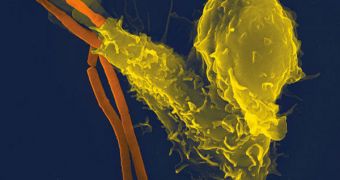In a ground breaking new investigation, scientists were able to establish for the first time that a type of cells usually involved in keeping the brain free of pathogens may play a role in the onset and development of a condition belonging to obsessive-compulsive spectrum disorder (OCSD). The study, which was carried out on unsuspecting lab mice, demonstrated that microglia – cells involved in scanning the brain for loose fragments of genetic information and other pathogens – can allow for the formation of diseases such as trichotillomania. In this condition, people compulsively pull out their hair, Nature News reports.
The disorder appears in mice when the rodents exhibit abnormally low concentrations in their microglia populations. But the new study holds some good news as well. Researchers have demonstrated that applying treatments which restore these cells to their initial numbers results in the disappearance of the abnormal behavior. This suggests a new type of treatment for the human equivalent of the conditions as well, they say. “No connection had ever been made between microglia and behavior,” explains University of Utah in Salt Lake City expert Mario Capecchi. He is the leader of the team that conducted the research. Details of the work appear in the May 27 issue of the esteemed journal Cell.
Yale University expert Christopher Pittenger, who was not a part of the study, says that this discovery and the correlation it evidenced come as a big surprise. Thus far, neuroscientists have always believed that this type of abnormal behavior was caused by impaired brain development, or may come from diminished neural function. To learn that the causes may be of a more physical nature was very enlightening, he adds. Numerous children and adults suffer from obsessive-compulsive disorders. Frequent hand washing and nail biting are two of the most common manifestations.
Another finding that surprised scientists, this time in a pleasant manner, was the fact that a bone-marrow transplant took care of the condition in mice. “It's a paradigm-shifting idea that you can transplant a compulsion into a normal animal,” comments University of Minnesota in Twin Cities neurobiologist Frank Burton. “I don't think these mice have obsessive-compulsive disorder, but I think they're fascinating and important and might ultimately shed some light on the disorder or other conditions,” Pittenger concludes.

 14 DAY TRIAL //
14 DAY TRIAL //